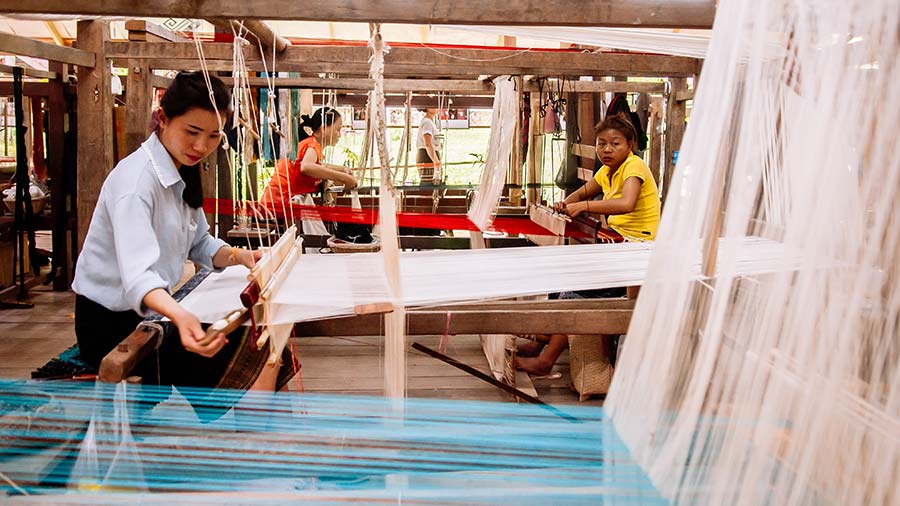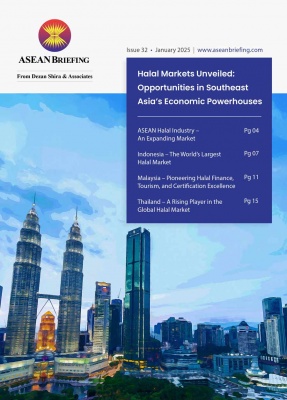Vietnam's Agrifood Export Potential: Key Guidelines for Trade Businesses
We discuss Vietnam's expanding agrifood export market potential and offer key guidelines for trade businesses to thrive globally. Keeping track of global market trends, aligning with regulatory changes, meeting compliance thresholds, and investing in R&D and product innovation are some essential steps for enterprises in this domain to gain a strong foothold in the global agrifood market.
As Vietnam's economy continues to thrive and its export market expands, businesses in the country are presented with significant opportunities to capitalize on the global demand for high-quality agricultural products and processed foods.
With a strategic geographical location, favorable climate conditions, and a rich agricultural heritage, Vietnam has emerged as a key player in the global export market, particularly in regions such as Northeast Asia, the United States, and the European Union.
Vietnam’s agro-products export performance
In the first five months of 2024, Vietnam’s agro-product exports surged to US$24.14 billion. The month of May alone saw a turnover of US$5.06 billion, marking an 11.2 percent increase over the same month last year. Agricultural, forestry, and fishery exports from Vietnam all witnessed substantial growth, with increases in exports recorded to regions like the Americas, Africa, Asia, Europe, and Oceania. The United States, China, and Japan remained the top export markets for Vietnam's products. Exports to the US surged by 23.9 percent, capturing a 20.6 percent share of the market. The Chinese market accounted for 19.2 percent, marking an 8.6 percent increase, while exports to Japan rose by 6.6 percent, representing a 6.7 percent share of the market.
According to Statista, in 2021, the agricultural production sector made a significant contribution of US$67 billion to Vietnam’s gross domestic product (GDP). Concurrently, the food and beverage manufacturing sector also played a pivotal role, contributing US$17 billion to the overall GDP during the same period.
Trends in exports of agro-forestry-fishery products to US market
In 2023, the US emerged as the second-largest market for Vietnam's agro-forestry-fishery products, constituting 20.7 percent of its total export turnover. Vietnam dominated the US cashew nuts market, accounting for 88.7 percent of total imports.
Additionally, Vietnam experienced significant growth in fisheries exports to the US, particularly in shrimp, tra fish, and tuna. Despite challenges, the US consumption trend for tra fish is evolving towards processed and high-value-added products, meaning there are expected benefits if Vietnam's seafood industry diversifies and focuses on deep processing.
Furthermore, cinnamon and cardamom exports from Vietnam to the US have seen notable success, with cinnamon alone accounting for 35 percent of the US's total import turnover for the spice. The rising demand for immune-boosting products, especially post-COVID-19, explains the growing interest in cinnamon and cardamom essential oils among US consumers.
Industry observers note that high-quality raw material and the application of organic farming standards will be necessary if Vietnamese products want to successfully compete against similar products from rival markets like India, Sri Lanka, and Indonesia.
Guidelines for Vietnam's agrifood export businesses
Understanding global market dynamics
Vietnam's agricultural exports have experienced substantial growth in recent years, fueled by increasing demand for a diverse range of products.
Among the most sought-after Vietnamese exports are fruits such as durian, longan, lychee, mango, dragon fruit, coconut, banana, pineapple, and passion fruit. These fruits, renowned for their exceptional flavor and quality, have captured the attention of consumers worldwide, making Vietnam a significant exporter in the global fruit market.
In addition to fruits, Vietnam also exports a variety of processed foods, including canned fruits, dried fruits, fruit juices, and fruit preserves. These value-added products offer exporters the opportunity to diversify their product offerings and cater to different market segments, further enhancing Vietnam's competitiveness in the global market.
Navigating regulatory requirements
One of the most critical aspects of exporting agricultural products and processed foods is compliance with stringent regulatory requirements. Importing countries often impose phytosanitary and food safety standards to ensure the safety and quality of imported goods. For Vietnamese exporters, adhering to these standards is essential for accessing international markets and maintaining a competitive edge.
In Northeast Asia, including China, Japan, and South Korea, as well as in the European Union and the United States, regulatory requirements vary and can be complex.
For example, China's General Administration of Customs (GAC) has established strict administrative provisions and safety measures for imported food, necessitating rigorous compliance by exporters.
Similarly, the European Union maintains stringent traceability and quality standards, particularly concerning food safety, requiring exporters to stay abreast of regulatory updates and ensure compliance with maximum pesticide residue levels and other requirements.
Learning from case studies and success stories
Examining successful case studies can provide valuable insights into meeting market requirements and achieving success in international markets.
Thanh Ha lychee, grown in Hai Duong province, is a prime example of a Vietnamese agricultural product that has successfully penetrated premium markets worldwide. Thanh Ha lychee's high quality and exceptional flavor have enabled it to command premium prices in markets, such as China, Japan, France, the United States, South Korea, and Malaysia, highlighting the potential for Vietnamese agricultural products to capture value and establish a competitive edge in global markets.
Furthermore, the success of Thanh Ha lychee underscores the importance of adhering to regulatory requirements, ensuring product quality and safety, and leveraging market intelligence to identify and capitalize on export opportunities.
Tapping government support initiatives
The Vietnamese government, through initiatives led by the Ministry of Industry and Trade and the Ministry of Agriculture and Rural Development, offers support to businesses navigating export challenges. These initiatives include the establishment of cooperation mechanisms, provision of market information and guidance, organization of conferences on free trade agreements (FTAs), and coordination with localities to promote trade and address export barriers.
Furthermore, the issuance of growing area and packaging facility codes has been instrumental in aligning production with market demand and enhancing the reputation of Vietnamese agricultural products. With 56 localities having granted over 7,000 growing area codes and 1,600 packaging facility codes, Vietnam is making significant strides in facilitating exports to key markets.
Prospects and challenges for Vietnam-based agrifood enterprises
Vietnam-based agrifood producers have made significant strides in global export markets, yet they face a landscape replete with both opportunities and challenges that demand strategic navigation.
Firstly, leveraging the numerous free trade agreements (FTAs) that Vietnam has signed can significantly enhance access to export markets. These agreements not only facilitate trade and investment cooperation but also offer avenues for knowledge exchange, enabling Vietnamese producers to glean insights from the scientific and technological advancements of partner countries. Moreover, diversifying export markets beyond traditional giants like China and the US emerges as a prudent strategy. Venturing into higher-segment markets not only augments competitiveness but also mitigates reliance on specific countries, thus fortifying market resilience.
Furthermore, prioritizing quality and safety is imperative for sustained success in global markets. Meeting stringent international standards, such as those prescribed by certifications like Global GAP (Good Agricultural Practices), engenders confidence among global buyers and reinforces Vietnam's reputation as a reliable exporter. Additionally, investing in technology and innovation emerges as a cornerstone for enhancing productivity and product quality. Embracing modern farming techniques, precision agriculture, and value-added processing not only boosts efficiency but also bolsters competitiveness in an increasingly sophisticated marketplace. Research and development endeavors are indispensable for staying abreast of evolving consumer preferences and market trends.
Moreover, the cultivation of robust branding and marketing strategies is pivotal for differentiating Vietnamese products in global markets. By highlighting unique selling points and sustainable practices, agrifood producers can carve out distinctive identities that resonate with discerning consumers.
Lastly, fostering collaboration with industry associations and networks can yield invaluable benefits. By actively engaging with these forums, producers gain access to valuable insights, market intelligence, and collaborative opportunities that can catalyze growth and innovation within the sector.
Business advisory: Key recommendations
To ensure success in exporting agricultural products and processed foods, businesses are advised to adhere to the below recommendations aimed at optimizing their operations and enhancing their competitiveness in international markets.
First and foremost, conducting comprehensive research and market intelligence is essential. This involves gaining insights into market dynamics, understanding consumer preferences, and staying abreast of regulatory requirements in target export markets. By staying informed about regulatory updates and market trends, businesses can adjust their strategies accordingly and maintain a competitive edge.
Compliance and certification are critical aspects of exporting agricultural products. Businesses must ensure strict adherence to phytosanitary and food safety standards, as well as regulatory requirements specific to each import market. Obtaining necessary certifications and approvals is imperative to facilitate smooth export operations and mitigate potential risks.
Furthermore, supply chain optimization plays a crucial role in ensuring product quality and traceability throughout the supply chain. Establishing integrated supply chains that streamline production, processing, and distribution processes is essential. Collaborating with certified growers and processing facilities helps maintain product quality and ensures compliance with regulatory standards.
Strategic partnerships are another key recommendation for businesses seeking to expand their market reach and enhance market penetration. By forging partnerships with distributors, importers, and retailers in target markets, businesses can leverage existing networks and resources to access new opportunities. Additionally, leveraging government support initiatives and trade promotion activities can help connect businesses with potential partners and facilitate market entry.
A commitment to continuous improvement is non-negotiable in the fiercely competitive global marketplace. Businesses must continually scrutinize and enhance product quality, packaging, and branding to align with evolving consumer preferences and market exigencies. Investing in research and development enables businesses to innovate and differentiate their product offerings, thereby fortifying their foothold in fiercely contested markets.
By following these recommendations, agricultural and food processing enterprises in Vietnam can unlock the full potential of the country’s export market access and achieve sustainable growth in international markets.
Conclusion
The agrifood sector contributes significantly to Vietnam’s economy, and continued efforts to improve production, quality, and market access will be key to thriving globally. Vietnam's export market access via regional and international trade networks presents abundant opportunities for agrifood trade businesses.
However, to ensure success, these enterprises must prioritize compliance with regulatory requirements, stay informed about market dynamics, and leverage government support initiatives, so they can carve out a strong niche in the global market landscape and chart a trajectory of sustained growth and prosperity.
With strategic planning, rigorous compliance, and a commitment to continuous improvement, Vietnamese exporters can position themselves as leaders in the global agricultural trade landscape.
This article first appeared on Vietnam Briefing, our sister platform.
About Us
ASEAN Briefing is produced by Dezan Shira & Associates. The firm assists foreign investors throughout Asia and maintains offices throughout ASEAN, including in Singapore, Hanoi, Ho Chi Minh City, and Da Nang in Vietnam, in addition to Jakarta, in Indonesia. We also have partner firms in Malaysia, the Philippines, and Thailand as well as our practices in China and India. Please contact us at asean@dezshira.com or visit our website at www.dezshira.com.



















